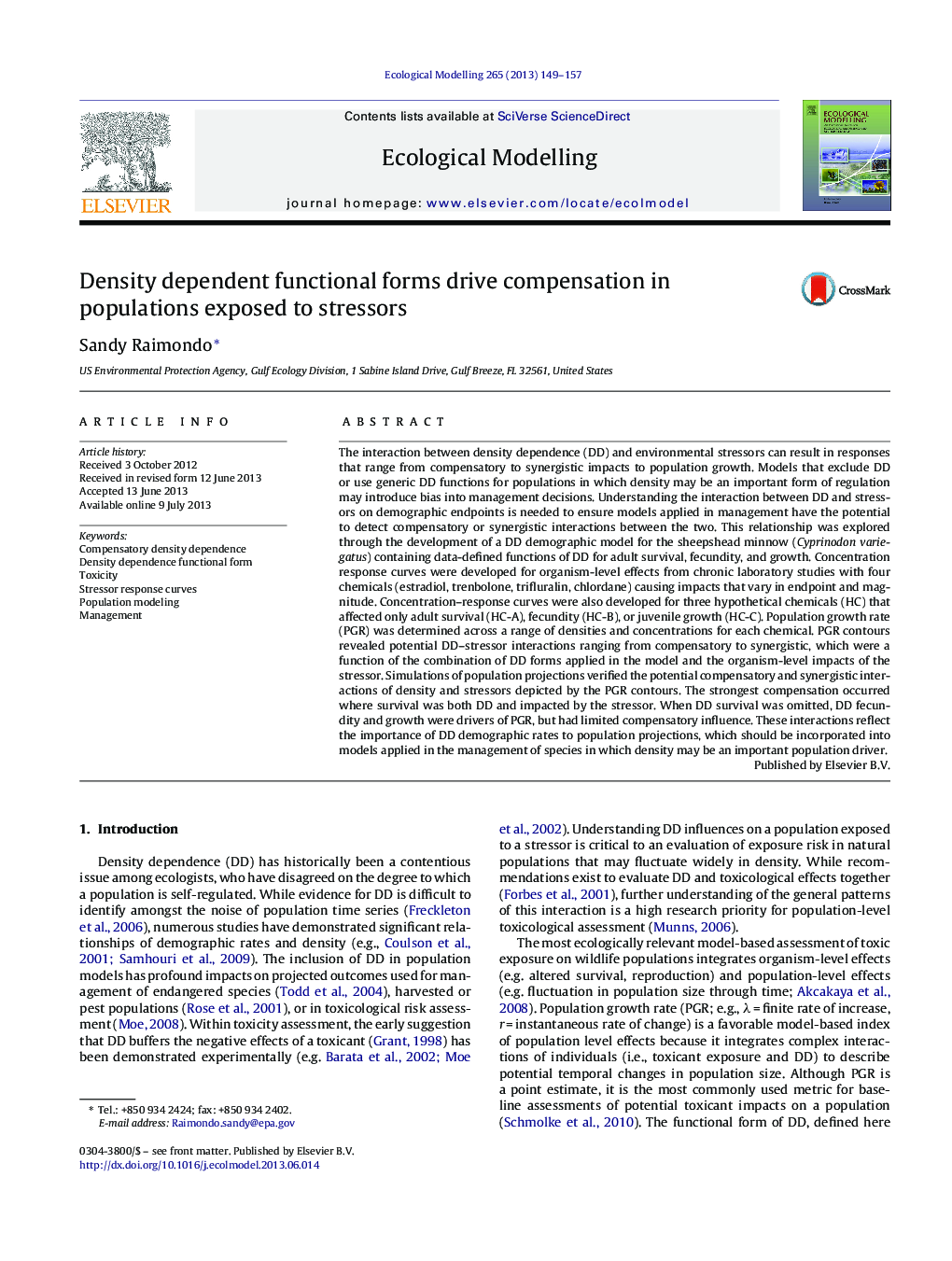| Article ID | Journal | Published Year | Pages | File Type |
|---|---|---|---|---|
| 6297080 | Ecological Modelling | 2013 | 9 Pages |
Abstract
The interaction between density dependence (DD) and environmental stressors can result in responses that range from compensatory to synergistic impacts to population growth. Models that exclude DD or use generic DD functions for populations in which density may be an important form of regulation may introduce bias into management decisions. Understanding the interaction between DD and stressors on demographic endpoints is needed to ensure models applied in management have the potential to detect compensatory or synergistic interactions between the two. This relationship was explored through the development of a DD demographic model for the sheepshead minnow (Cyprinodon variegatus) containing data-defined functions of DD for adult survival, fecundity, and growth. Concentration response curves were developed for organism-level effects from chronic laboratory studies with four chemicals (estradiol, trenbolone, trifluralin, chlordane) causing impacts that vary in endpoint and magnitude. Concentration-response curves were also developed for three hypothetical chemicals (HC) that affected only adult survival (HC-A), fecundity (HC-B), or juvenile growth (HC-C). Population growth rate (PGR) was determined across a range of densities and concentrations for each chemical. PGR contours revealed potential DD-stressor interactions ranging from compensatory to synergistic, which were a function of the combination of DD forms applied in the model and the organism-level impacts of the stressor. Simulations of population projections verified the potential compensatory and synergistic interactions of density and stressors depicted by the PGR contours. The strongest compensation occurred where survival was both DD and impacted by the stressor. When DD survival was omitted, DD fecundity and growth were drivers of PGR, but had limited compensatory influence. These interactions reflect the importance of DD demographic rates to population projections, which should be incorporated into models applied in the management of species in which density may be an important population driver.
Related Topics
Life Sciences
Agricultural and Biological Sciences
Ecology, Evolution, Behavior and Systematics
Authors
Sandy Raimondo,
